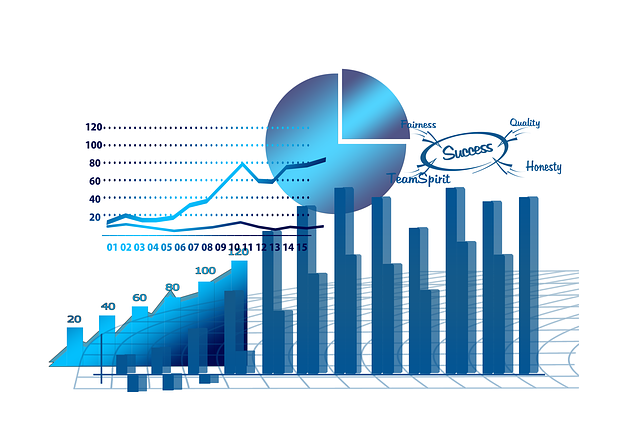February 12, 2025
Investing can be tricky. Many people worry about the right time to buy or sell. Dollar-cost averaging strategy can help. It is a simple way to invest regularly. This method can reduce risk and make investing easier.

What is Dollkar-Cost Averaging Strategy?
Dollar-cost averaging strategy is an investment technique. It involves investing a fixed amount of money at regular intervals. This can be done regardless of the price of the investment. By doing this, investors buy more shares when prices are low and fewer shares when prices are high.
How Does Dollar-Cost Averaging Strategy Work?
Imagine you have $6,000 to invest. Instead of investing it all at once, you invest $500 every month. Over time, you buy shares at different prices. This helps lower the average cost per share. It also reduces the impact of market volatility.
Benefits of Dollar-Cost Averaging Strategy
- Reduces Risk: By investing regularly, you avoid the risk of investing a large amount at the wrong time.
- Emotional Stability: It helps investors avoid emotional decisions based on market fluctuations.
- Simplicity: It is easy to set up and maintain.
- Consistency: Regular investments can build a disciplined investment habit.
Examples of Dollar-Cost Averaging Strategy
Let’s look at an example. Suppose you want to invest in a mutual fund. You decide to invest $500 every month. Over a year, you buy shares at different prices. This lowers your average cost per share.
Who Should Use Dollar-Cost Averaging Strategy?
Dollar-cost averaging strategy is good for beginners and experienced investors alike. It is especially useful for those who want to invest regularly without worrying about market timing.
How to Implement Dollar-Cost Averaging Strategy
Determine Your Budget
First, decide how much you can afford to invest regularly. This should be an amount that won’t affect your daily expenses.
Choose Your Investment
Select the stocks, mutual funds, or ETFs you want to invest in. Ensure they align with your financial goals and risk tolerance.
Set Up Automatic Investments
Most brokerage accounts offer the option to set up automatic investments. This makes the process hassle-free and ensures consistency.
Stick to Your Plan
It’s important to stick to your investment schedule. Avoid the temptation to stop investing during market downturns. Remember, dollar-cost averaging works best over the long term.
Historical Performance of Dollar-Cost Averaging Strategy
Historically, dollar-cost averaging strategy has proven to be an effective strategy. During periods of market volatility, this approach can help mitigate losses. By buying more shares when prices are low, investors can potentially enhance their returns when the market recovers.
Long-Term Performance
Over long periods, dollar-cost averaging strategy has shown consistent results. Investors who regularly invest over many years often see the benefits of this strategy. It reduces the impact of market timing and helps in averaging out the cost.
Comparative Analysis
Comparing dollar-cost averaging strategy with lump-sum investing, we see that the former can be advantageous in volatile markets. It reduces the risk associated with investing a large sum at a potentially high price.
✅ Smart Investments:
- Explore: What is a Smart Investment?
- Why It Matters: Understanding strategic financial moves for long-term growth.
✅ Market Volatility:
- Discover: Benefits of Market Volatility
- Key Insight: Learn how fluctuations can create profitable opportunities.
✅ Risk Management:
- Learn: How Do You Manage Risk in a Portfolio Investment?
- Essential Knowledge: Techniques to safeguard your investments against uncertainties.
Potential Drawbacks of Dollar-Cost Averaging Strategy

While dollar-cost averaging strategy has many benefits, it’s not without drawbacks. One downside is that it may take longer to invest a large sum of money. Additionally, in a consistently rising market, lump-sum investing might outperform dollar-cost averaging.
Opportunity Cost
One of the potential drawbacks is the opportunity cost. By spreading out investments over time, you may miss out on higher returns if the market consistently rises.
Psychological Factors
Investors need to stay committed to the dollar-cost averaging strategy. Market downturns can test patience. It requires discipline to continue investing during these times.
Real-Life Case Studies of Dollar-Cost Averaging Strategy
Case Study 1: The 2008 Financial Crisis
During the 2008 financial crisis, many investors panicked and sold their investments. However, those who stuck to a dollar-cost averaging strategy were able to purchase shares at lower prices. As the market recovered, these investors saw significant gains.
Case Study 2: The COVID-19 Pandemic
The COVID-19 pandemic caused a sharp market decline in early 2020. Investors using dollar-cost averaging strategy continued to invest regularly. When the market rebounded, they benefited from the lower average cost per share.
Case Study 3: Tech Boom and Bust
During the tech boom of the late 1990s and the subsequent bust, investors who used a dollar-cost averaging strategy were able to navigate the volatility. Those who invested large sums at the peak faced significant losses. In contrast, dollar-cost averaging allowed for the purchase of more shares during the downturn.
Advanced Techniques in Dollar-Cost Averaging Strategy
Value Averaging
Value averaging is an advanced technique. It involves adjusting the amount invested based on the performance of the investment. If the investment underperforms, you invest more. If it outperforms, you invest less. This technique aims to achieve a target investment value over time.
Strategic Allocation
Combining dollar-cost averaging strategy with strategic asset allocation can enhance returns. By diversifying investments across different asset classes, investors can reduce risk and improve long-term performance.
Psychological Benefits of Dollar-Cost Averaging Strategy
One of the often-overlooked benefits of the dollar-cost averaging strategy is the psychological comfort it provides to investors. Investing a large sum of money can be intimidating, especially for new investors. Dollar-cost averaging offers a structured approach, allowing investors to contribute smaller amounts at regular intervals. This can reduce the anxiety associated with market fluctuations.
Consistency and Discipline
Regularly investing through dollar-cost averaging strategy fosters consistency and discipline. Investors are less likely to make impulsive decisions driven by market volatility. Instead, they adhere to a systematic plan, which can lead to better long-term results.
Building Wealth Over Time
Dollar-cost averaging strategy is an excellent way to build wealth gradually. It encourages regular saving and investing, which are crucial habits for financial success. By consistently investing a fixed amount, investors can accumulate a substantial portfolio over time.
Maximizing Returns in Volatile Markets
Market volatility is a common concern for investors. The dollar-cost averaging strategy can help mitigate the effects of market volatility. When prices are low, investors purchase more shares. When prices are high, they buy fewer shares. This approach helps in lowering the average cost per share, which can enhance returns when the market stabilizes.
Practical Tips for Dollar-Cost Averaging Strategy
Here are some practical tips for implementing the dollar-cost averaging strategy effectively:
- Set Realistic Goals: Determine your investment goals and time horizon. This will help you choose suitable investments and stay committed to your plan.
- Automate Your Investments: Set up automatic contributions to your investment account. This ensures consistency and reduces the temptation to time the market.
- Review Your Portfolio Regularly: While the dollar-cost averaging strategy is a long-term approach, it’s essential to review your portfolio periodically. Make adjustments as needed to align with your financial goals.
- Stay Informed: Keep yourself updated on market trends and economic indicators. This will help you make informed decisions and stay confident in your investment strategy.
For more information, you can visit trusted websites like Fidelity Investments and Investopedia.
FAQs about Dollar-Cost Averaging Strategy
1. What is Dollar-Cost Averaging?
Answer: Dollar-cost averaging is an investment strategy where you invest a fixed amount of money at regular intervals, regardless of the price of the asset. This helps in lowering the average cost per share over time.
2. How does Dollar-Cost Averaging help reduce risk?
Answer: By investing regularly, you avoid the risk of investing a large amount at the wrong time. It smoothens out the purchase price over time and reduces the impact of market volatility.
3. Can beginners use Dollar-Cost Averaging?
Answer: Yes, dollar-cost averaging is suitable for both beginners and experienced investors. It is especially helpful for those who want to invest regularly without worrying about market timing.
4. What are the benefits of Dollar-Cost Averaging?
Answer: The benefits include reduced risk, emotional stability, simplicity, and consistency in investments. It helps investors avoid emotional decisions and build a disciplined investment habit.
5. Are there any drawbacks to Dollar-Cost Averaging?
Answer: One potential drawback is that it may take longer to invest a large sum of money. In a consistently rising market, lump-sum investing might outperform dollar-cost averaging. Additionally, there is an opportunity cost if the market consistently rises.